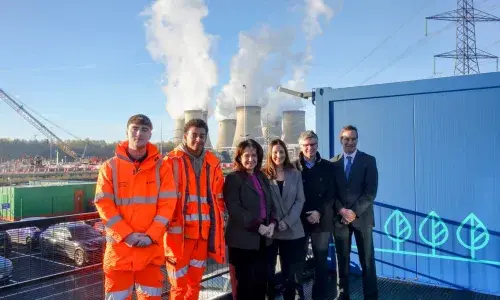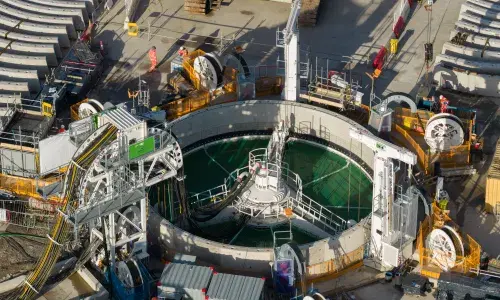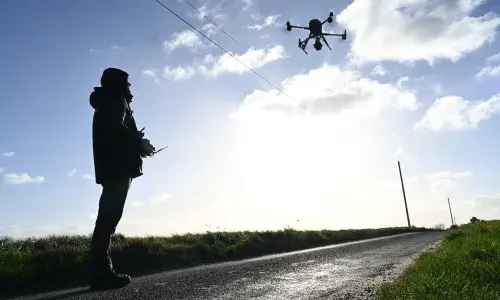
National Grid submits planning application to upgrade electricity network between Bramford and Twinstead
-
National Grid has submitted an application for development consent to the Planning Inspectorate for the Bramford to Twinstead Reinforcement.
-
The reinforcement will help deliver cleaner, greener electricity to homes and businesses, and support the UK’s move to net zero by 2050.
-
The Planning Inspectorate now has 28 days to decide whether the application can progress to the examination stage.
-
This application follows years of public consultation and engagement with stakeholders, which has helped National Grid to shape plans for the reinforcement.
-
Following acceptance, the Planning Inspectorate takes ownership of the process, and members of the public can make representations directly to the Inspectorate.
-
The Secretary of State will have the final say on whether to approve the application.
National Grid can confirm that it has submitted an application for development consent to the Planning Inspectorate for the Bramford to Twinstead Reinforcement.
The Bramford to Twinstead Reinforcement is a proposed electricity transmission network upgrade between Bramford substation in Suffolk and Twinstead Tee in Essex. It will help deliver cleaner, greener electricity to homes and businesses, and support the UK’s move to net zero by 2050.
Over the past few years, extensive engagement and multiple rounds of public consultation has been held with local authorities, elected officials, technical consultees, affected landowners and members of the local community.
This engagement, alongside environmental assessments and technical work, has helped National Grid to develop final plans for the proposed reinforcement, which would see the construction of a new, 29 km 400 kV electricity transmission line using a mixture of overhead line and underground cables.
The submitted plans are approximately:
- 18 km of new 400 kV overhead line and pylons
- 11 km of new 400 kV underground cables, including in the Dedham Vale AONB and parts of the Stour Valley
- four cable sealing end compounds to connect overhead line and underground cable sections together
- the permanent removal of 25 km of existing 132 kV overhead line between Burstall Bridge and Twinstead Tee, and 2 km of existing 400 kV overhead line south of Twinstead Tee
- a new grid supply point substation at Butler’s Wood, to supply the local distribution network
- other associated infrastructure, such as construction access tracks, compounds, working areas and construction haul roads
- proposals to deliver environmental mitigation, compensation and enhancement, including 10% biodiversity net gain.
James Greenhalgh, Project Director, commented: “Our application submission marks a significant milestone for the Bramford to Twinstead Reinforcement, which remains an essential part of the UK’s transition towards a net zero future, by helping to connect renewable and low carbon energy to homes and businesses across the UK.
"We would like to thank everyone who has taken part in the numerous consultations held on the proposals. Your feedback has been vital in informing our final plans, which also includes the removal of 27 km of existing overhead line and 10% biodiversity net gain.”
Following the submission of the application for development consent, the Planning Inspectorate has 28 days, until 25 May 2023, to decide whether to accept the application.
If the application is accepted, the Planning Inspectorate and National Grid will share further details of how application documents can be viewed. The Planning Inspectorate will then carry out a detailed, independent examination of our proposals. The final decision on whether to approve the application sits with the Secretary of State for Energy Security and Net Zero, with this decision expected after the completion of the examination in the next 15-18 months.
Should the application receive development consent, construction would begin in late 2024 and take around four years. When complete, the Bramford to Twinstead Reinforcement will address an existing constraint on the high voltage transmission network and facilitate the transfer of cleaner, greener energy from offshore wind, interconnectors and nuclear generation from where it is generated to where it is needed.
More information on the project can be found at www.nationalgrid.com/the-great-grid-upgrade/bramford-to-twinstead.
Contact for media information only:
Helen Blake +44 07790 824788
Notes to editors
About National Grid
National Grid sits at the heart of Britain’s energy system, connecting millions of people and businesses to the energy they use every day. National Grid is working to build a cleaner, fairer and more affordable energy system that serves everyone, powering the future of our homes, transport and industry.
National Grid Electricity Transmission, owns, builds and maintains the electricity transmission network in England and Wales. It is National Grid Electricity Transmission that is developing the plans for the Bramford to Twinstead Reinforcement.
About the project
The existing transmission network in East Anglia was developed in the 1960s to meet electricity demand in the area. It does not have the capability needed to reliably and securely transport all the energy that will be connected by 2030 while operating to the required standards.
Feeding into Bramford substation from the north and east there are three electricity transmission lines – carrying power generated by the existing Sizewell B station and offshore wind farms. West of Bramford out to Twinstead Tee, there is currently only one electricity transmission line taking that power out to the wider network.
Between 2009 and 2013 work was previously undertaken to develop proposals to add this much needed network capability. Changes to when planned new generation would come online in East Anglia meant that work was put on hold at the end of 2013. Now that the reinforcement is needed again, National Grid is taking forward the work required to ensure it is in place before the end of the decade.
About the application process
The construction of the Bramford to Twinstead Reinforcement requires the granting of a Development Consent Order (DCO). This is a special type of planning application for nationally significant infrastructure projects, where an independent panel of inspectors is appointed to review the plans. Once submitted, it can take up to 18 months before a decision is made. The inspectors will issue a recommendation to the Secretary of State for Energy Security and Net Zero, who will make the final decision.
There are six stages to the national infrastructure planning process, with the submission of the application for development consent marking the completion of the first stage (pre-application). During this time, the Planning Inspectorate have 28 days to decide whether the application meets the required standard to proceed further. Should the Planning Inspectorate accept the application for consideration, the application will progress to the pre-examination stage, following by the examination, recommendation and decision stages.
Further information on the development consent process can be found on the Planning Inspectorate’s website.


